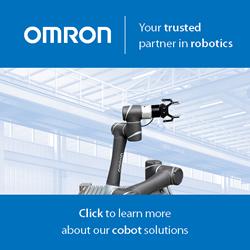Force of Habit: BitFlow CoaXPress Frame Grabber Used by Research Team to Determine Habituation Model
In order to monitor the habituation process, each fish was recorded by the Mikrotron camera for one hour at 560 frames per second (fps) as it was being exposed to complete darkness alternated with bright LED lighting and acoustic tapping.
WOBURN, MA, JANUARY 3, 2023 -- A central function of the brain is to learn and adapt with experience. Adaption to experiences often reflects attempts by the brain to identify and attend preferentially to important stimuli while ignoring inconsequential stimuli. For example, a coyote identifying the smell of prey is crucial to its survival, yet recognizing that a den still smells like its pack is not. This ability to suppress responses to continuous non-salient stimuli is known as "habituation."
Habituation is the simplest form of learning, yet despite its presumed simplicity a model of how this process is regulated in the brain is still emerging. To explore this mystery a group of scientists from Faculté de Médecine et de Pharmacie (Lyon, France), Ohio State University (Columbus, Ohio), University of Pennsylvania (Philadelphia, Pennsylvania), and Harvard University (Cambridge, Massachusetts) recently conducted a study on long-term habituation of larval zebrafish that investigated the role of neural circuits central to habituation. For the first time they identified dozens of pharmacological agents that strongly modulate habituation learning and distinct classes of neurons that are activated and adapt their activity during the process.
Behavior of the larval zebrafish in response to abrupt global dimming (a dark flash) was recorded using a Mikrotron EoSens CXP-4 four-megapixel camera linked to a Bitflow Cyton CXP4 four-channel CoaXPress frame grabber. Although the BitFlow Cyton CXP4 frame grabber supports up to four cameras at speeds at 6.25 Gb/sec, only one was needed by the scientists in this study.
High speed, high-resolution imaging made possible by the CoaXPress interface was necessary to capture the exact posture of the fish. CoaXPress (CXP) is an asymmetric high-speed point to point serial communication standard for the transmission of video and still images, scalable over single or multiple coaxial cables. It has a high speed downlink of up to 12.5 Gbps per cable for video, images and data, plus a lower speed uplink up to 42 Mbps for communications and control. Power is also available over the cable ("Power-over-Coax") and cable lengths of greater than 100m may be achieved.
In order to monitor the habituation process, each fish was recorded by the Mikrotron camera for one hour at 560 frames per second (fps) as it was being exposed to complete darkness alternated with bright LED lighting and acoustic tapping. Researchers switched the view of the camera between two plates using 45-degree incidence hot mirrors mounted on stepper motors for better observation. Tracking of the larval zebrafish's posturing in response to dark flashes was performed in MATLAB and then analyzed using Python.
Researchers found that long-term habituation to sudden stimuli involves multiple molecularly independent plasticity processes that act to suppress different components of the response. For example, when stimulated with a dark flash, larval zebrafish often executed an O-bend response characterized by a strong body bend and a large turn. When presented with repeated flashes, however, larvae habituate and reduce the O-bending and in fact, remain hypo-responsive for multiple hours due to the majority of neurons across the brain depressing their responsiveness.
For more information, visit www.bitflow.com.
Featured Product

